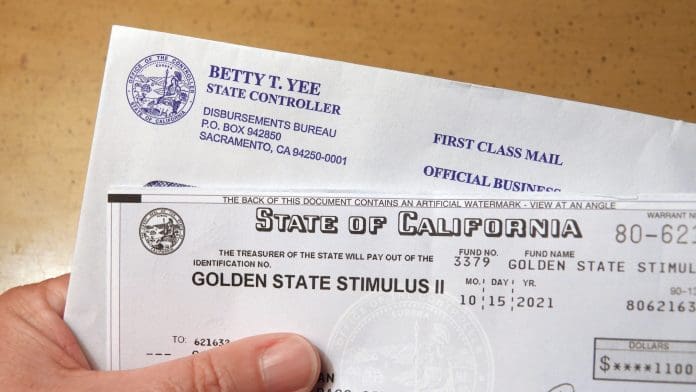The expanded Child Tax Credit for 2021 which brought in a generous stimulus check for families with children is a thing of the past. President Biden’s earnest attempts at stretching it through 2025 collapsed in the face of sustained opposition from the Republicans. And now a new set of rules will replace the expanded version.
Filers get ready to prepare for the 2022 tax returns either on their own or through records to accountants or other paid preparers. But in doing so they will need to keep in mind the tax changes that they applied for in 2022 and the way they should be reported on their return.
Among the most significant changes for 2022 has been to the Child Tax Credit stimulus check. The child tax credit payments have reverted to their pre-pandemic structure after a year of generous payments. 2021 was a year of a bonanza for families with children.
For the first time, the tax credits were paid out as advance stimulus checks. beneficiaries received the payments months in advance. The Child Tax Credit stimulus check for 2021 was payable against the income tax returns to be filed in the first quarter of 2022.
The Child Tax Credit payments were increased from $2,000 per child to between $3,000 and $3,600 for 2021 depending on the age of the child. And for the first time, the eligibility age for children was increased to include 17-year-olds.
full refundability was also introduced for the child tax credit stimulus check. in the context of the American Rescue Plan Act expanded Child Tax Credit stimulus check, full refundability means the credit remains the same amount per child for low and moderate-income taxpayers, irrespective of their income. Higher-income taxpayers are subject to a phase-out of the credit.

The Tax Policy Center (TPC) estimates that the full refundability of the ARPA expanded Child Tax Credit increased the average credit amount by $1,040 (from $3,270 to $4,310) among taxpayers with children.
According to estimates, the full refundability resulted in a larger average credit for the bottom 60% of taxpayers, with larger average increases for lower-income taxpayers. The lowest-income taxpayers with children are estimated to receive the largest benefits from full refundability.
The lowest income 20% of taxpayers, that is the lowest quintile, receive a credit that is more than twice as large on average because of full refundability. The remainder of the increase in the average credit is attributable to the larger per-child credit and the expanded eligibility to include 17-year-olds.
Even for the 2022 income tax returns to be filed in the first quarter of 2023, families with children could qualify for a slew of new tax credits and deductions, depending on their income level.
While the tax season has only kicked off, it is a good idea to gather as much data as possible now, so you are not clambering as the April 18 deadline creeps up.
Getting A Social Security Card For The Child Is The First Step To Getting The Child Tax Credit
The first point of business for parents is to ensure that their child has a Social Security number. Parents can only claim their child as a dependent on their tax return if they have a Social Security number.
Parents whose children do not have a Social Security number should apply for one immediately. It will normally take a while for the Social Security Administration to check and verify the child’s birth certificate and other identity documents. To overcome this, parents need to file for a tax extension as early as possible.


For those who have not received their Social Security number by October 16, which is the tax extension deadline, the filer can always go for an amended return once they receive it. But then the process can be laborious.
People normally think that having a child will automatically lower their tax bill or immediately lead to a larger fund. But in many cases, it depends on the income level. Lower-income group taxpayers are generally entitled to more generous rates of deductions and tax credits if they have a child or adopt one.
Those who have adopted a child in 2022 qualify for a credit of up to $14,890 which is part of adoption-related expenses incurred for a child. This could include adoption-related fees, attorney fees, and travel expenses.
Those with a modified adjusted gross income below $223,410 can claim the full credit. After that stage, the credit support phased out and is unavailable for people who had a modified gross adjusted income of $263,410.
This credit is not refundable. That means that if a filer does not owe any taxes, they will not be able to claim any credit. However, this can be carried forward up to 5 years. This will reduce a filer’s tax liability in the future.
Couples who turn parent in 2022, can qualify for the child tax credit stimulus check if their adjusted gross is less than $200,000 for individuals and $400,000 for those filing a joint return with a spouse.
The maximum child tax credit allowed for each qualifying child born last year has come down to pre-pandemic levels. It has gone down from $3.600 to $2,000 for a child aged 5 or below, and $3,000 for children aged 6 through 17 years old. Further, a filer cannot receive a portion of the credit in advance. This is what happened in 2021.
Filers with an adjusted gross income of $43,000 or below in 2021 could receive a tax credit of up to $3,000 that was spent on child care. Filers may receive tax documents from the child’s care service. And even if they do not, the filer must gather as much information as possible to prove that your child care payments are paid home.
It is usually convenient to recreate the expense if you paid using either a check or a credit card. Normally filer world does not need to come up with a detailed level of documentation to claim the credit if your return is audited. But it would be prudent to get into the habit of retaining receipts for expenses even for those expenses that they might not think of as tax-deductible.






